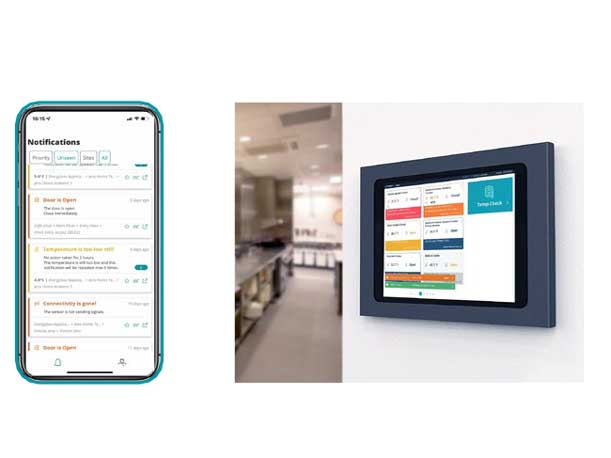How Cisco Partner Energybox Is Boosting Sustainability Through IoT Automation
The solution provider is saving enterprises tens of thousands of dollars and pulling tens of thousands of pounds of carbon off their books at the same time, the firm and its technology partner Cisco tell CRN.

Energybox, a solution provider that specializes in IoT automation, is offering sustainability solutions for multi-site enterprises, including hospitality and retail-focused businesses, storage, commercial and medical facilities in partnership with Cisco Systems.
“There’s a huge opportunity to make an impact,” Nicolai Wiest, CEO of Energybox, told CRN. “It’s driven by our customers’ consumers. They want to buy from companies that are operating sustainably, so it’s important for the brand, but not only are we saving them energy, we’re saving them money, and that’s a big driver as well.”
The Nashville-based firm relies on Cisco’s industrial networking products, including the Catalyst line and the tech giant’s IoT Operations Dashboard. The firm also offers its own cloud-based IoT Platform -- EnergyboxONE -- that includes integrated AI, control devices and sensors to deliver a reliable, turnkey service to help their customers optimize their energy usage, manage their facilities more efficiently and meet their sustainability goals through actionable data.
[Related: Cisco’s Partnering For Purpose Initiative Includes Sustainability, Social Responsibility]
With more than 40 percent of global CO2 admissions being generated by buildings, companies that have a large footprint of facilities are becoming increasingly interested in sustainability and related cost savings, Wiest said.
Energybox on average saves its customers about 20 percent in energy costs.
The problem for many companies that are interested in sustainability is that they often don’t know how’ll they achieve these goals, said Wes Sylvester, worldwide vice president of Cisco’s Industry Solutions Group. These customers, he said, are asking their vendors, like Cisco, for help.
“[They are saying:] ‘You are my backbone, my networking provider, how can you help me reduce energy consumption or greenhouse gases or emissions?’’ Sylvester said. “It’s really a demand from our customers asking us how we can help and then we look into the market to partner to see who we need to partner with to help us do that. Energybox rose to the top.”
Helping customers meet these goals starts with transparency, Wiest said. By providing monitoring, Energybox can help businesses see when equipment and energy is being used. Next, automating and scheduling those operations can reduce energy cost and prolong the life of some critical equipment, the company said. Energybox also provides valuable data in the form of monthly energy reports to its customers so they can break out and analyze device groups or different locations and regions.
In collaboration with Energybox’s platform, Cisco’s IR1101 Integrated Services Router rugged series for industrial environments can run software at the edge and can save customers “a ton of power,” Sylvester said. The router uses 45 percent less energy than the previous generation and doesn’t require businesses to have separate networking and edge compute devices, he added.
The Catalyst series and the EnergyboxONE platform ensures multi-layer security, an important piece of the solution, Wiest said. “When you start taking control of the stores or hundreds of facilities, uptime and security is absolutely key because you’re taking over control of everything -- the lighting, the HVAC -- that runs in store. Cisco’s a great partner for that, as well as for scalability,” he said.
The firm counts some of the country’s most popular brands as its customers, including Starbucks, Wendy’s, 7 Eleven, and Labcorp. Energybox recently worked with Cisco to install its IoT automation solutions in more than 1,000 Wendy’s locations and growing. It’s a big win and evidence of strong adoption of the solution because many quick-service restaurants like Wendy’s are franchise-owned, Sylvester said.
“A corporation like Wendy’s might think [the solution] is super interesting. But the franchisee needs to see a true ROI to invest in something, as well as the impact on carbon emissions,” he said. “We are saving these customers tens of thousands of dollars and pulling tens of thousands of pounds of carbon off of their books as well. It’s not an either/or, and I think that’s one of the big wins here.”
The joint Energybox/Cisco solution is also plug-and-play with its integrated networking and edge routers -- no CCIE certification required for deployment, the companies added.
Wiest said that many customers earn back their monthly subscription fee for the sustainability solution in the first two weeks. “We constantly verify the savings. And many competitors are afraid to do that. We show customers exactly what they are saving, whether it’s on lighting, and so on. Our customers really like we are not just selling them a solution.”
Energybox is continuing to build out its edge control functionality and expanding connectivity to more devices based on the demands it’s getting from customers, Wiest said. “We are becoming that sustainability platform in these large enterprises,” he said.
While the firm works directly with end customers, Energybox also goes to market through the channel with its Certified Integration Partner program. These partners, the company said, play a crucial role in the selling, installation, and deployment of Energybox’s system and solutions.
In addition to Cisco, Energybox also counts Amazon Web Services as one of its main technology partners.